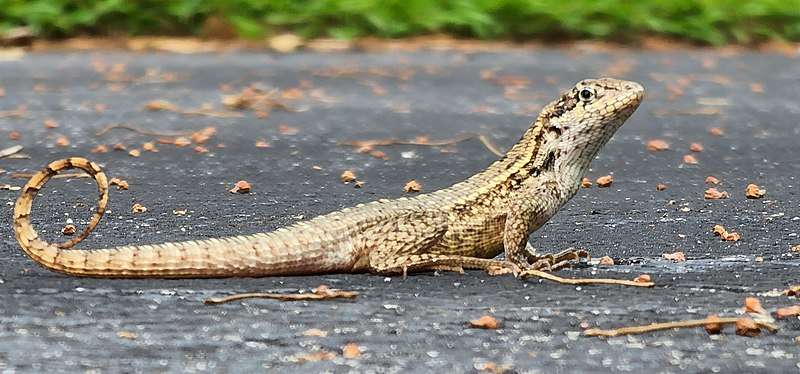
Description:
Scientific name: Leiocephalus carinatus
Life span: 8+ years
Leiocephalus carinatus is a species of lizard in the family Leiocephalidae, also known as the northern curly-tailed lizard or saw-scaled curlytail (curly-tailed lizard). Adults can grow to a length of 26 cm (including the tail) or 10.5 cm (4.1 in) from the snout to the vent (SVL) (10 in). The dorsal scales have pointed keels. When L. carinatus is lying horizontally on rocks or the ground, it resembles lizards of the genus Sceloporus but with a tail that is typically curled downwards.
Native Region/Habitat
It is indigenous to Cuba, the Cayman Islands, and the Bahamas. It was purposefully introduced in Palm Beach, Florida, in the 1940s in an effort to eradicate pests that attacked sugar cane, and it is now found in a few other regions of the state. A different introduced people inhabits Swan Islands, Honduras.

Behavior:
It is a large, muscular, and energetic lizard that lives largely on land. When threatened, it will hide in a burrow or hollow. It favors sunny locations with loose stones and rubble. Even when a rock retreat was given, a huge captured specimen in the Cayman Islands was often shown to burrow fully under the sand in a holding tank. Also, the lizard “played dead” when handled and stayed immobile for a little period of time after being set down.
When being pursued, Leiocephalus carinatus uses tail curling as an antipredator defense. When the predator is far away, the lizard will frequently engage in this activity in an effort to deter would-be pursuers; but, when the predator is close, the lizard will instead run for cover..
Care As a pet/In captivity:
It’s crucial to attempt to give curly tail lizards a home with an enclosure big enough for them to explore and climb a little bit. Despite being ground lizards, they can be found in the wild climbing rocks and shattered tree limbs. The ideal hardwood vivarium is at least 3 feet in size, but if you can use a larger enclosure, that’s even better. The enclosure needs to be nice and toasty.
Since they are active during the day as well, a UVB light is necessary to promote the synthesis of D3 and aid in the growth of their bones. Because they cannot be connected to a thermostat, if you are using a Mercury vapour bulb inside the enclosure, please make sure it isn’t too warm.
It is advisable to utilize a heat light coupled to a dimmer thermostat if you are using separate UVB and heat sources to help regulate temperature. This species should be exposed to basking temperatures of 98 to 105 oF (36 to 40 oC), chilly temperatures of 80 oF (26 to 27 oC), and a nighttime temperature drop of about 70 F. (21 oC).
Because they are omnivorous eaters, Curly Tail Lizards will consume a wide range of foods, including insects, flowers, fruit, and in the wild, even smaller lizards. Using high-quality calcium and vitamin supplements, such as Arcadia EarthPro-A and Arcadia EarthPro-CA, at least three times per week for the calcium and twice per week for the vitamins is always advised. Live foods that have been gut loaded are also more nutrient-dense for your lizard.
Table





